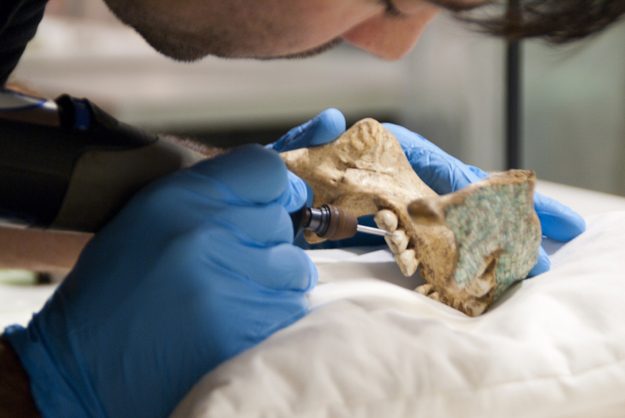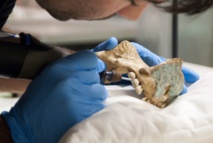"Radiometric dating showed the skull and the turquoise are from the correct time period and origin and are authentic," the museum said on its website.
"But alas: further investigation showed a 20th-century glue was used (to mount the mosaic)," the museum said.
The teeth are also false "as it was too well preserved for a skull that lay underground for centuries," Dutch daily Trouw reported.
The museum bought the piece in 1963 for the equivalent of around $20,000 (19,000 euros) and was seen as a striking example of ancient Mesoamerican art.
An investigation into possible skull-duggery was launched after the museum's conservator Martin Berger received a telephone call back in 2010 from a French colleague in Marseille, Trouw said.
The colleague told Berger they received a similar skull from a private collection and that person who donated the art had doubts about its authenticity.
Berger and his colleagues travelled to a Paris-based laboratory where the Dutch-owned skull was analysed and where "we realised that ours was also a bit more 'modern' than we thought".
Berger told the paper he suspected the fake was mounted by a Mexican dentist back in the 1940s or 1950s, when Mexican archeological sites were subjected to large-scale plunder and dealing in artworks like those of the Mixtecs was a lucrative business.
Asked whether he was disappointed by the revelation, Berger told the newspaper: "No."
"In actual fact it's given us a bizarre story and that's exactly what museums want to do, to tell stories.
"It remains as one of our masterpieces -- except, we've changed the information on the sign board."
In any case, said Berger, the skull is only a "partial forgery".
"The skull as well as the turquoise are unique archaeological material. Only, the Mixtecs themselves didn't do the glueing," he said.
Similar Central American crystal skulls housed in museums in Paris, London and Washington, D.C. believed to have been pre-Colombian, were revealed to be fake in a scientific study published in 2008.
------------------------------------------------------------------------------------------------------
"But alas: further investigation showed a 20th-century glue was used (to mount the mosaic)," the museum said.
The teeth are also false "as it was too well preserved for a skull that lay underground for centuries," Dutch daily Trouw reported.
The museum bought the piece in 1963 for the equivalent of around $20,000 (19,000 euros) and was seen as a striking example of ancient Mesoamerican art.
An investigation into possible skull-duggery was launched after the museum's conservator Martin Berger received a telephone call back in 2010 from a French colleague in Marseille, Trouw said.
The colleague told Berger they received a similar skull from a private collection and that person who donated the art had doubts about its authenticity.
Berger and his colleagues travelled to a Paris-based laboratory where the Dutch-owned skull was analysed and where "we realised that ours was also a bit more 'modern' than we thought".
Berger told the paper he suspected the fake was mounted by a Mexican dentist back in the 1940s or 1950s, when Mexican archeological sites were subjected to large-scale plunder and dealing in artworks like those of the Mixtecs was a lucrative business.
Asked whether he was disappointed by the revelation, Berger told the newspaper: "No."
"In actual fact it's given us a bizarre story and that's exactly what museums want to do, to tell stories.
"It remains as one of our masterpieces -- except, we've changed the information on the sign board."
In any case, said Berger, the skull is only a "partial forgery".
"The skull as well as the turquoise are unique archaeological material. Only, the Mixtecs themselves didn't do the glueing," he said.
Similar Central American crystal skulls housed in museums in Paris, London and Washington, D.C. believed to have been pre-Colombian, were revealed to be fake in a scientific study published in 2008.
------------------------------------------------------------------------------------------------------









 Home
Home Politics
Politics











